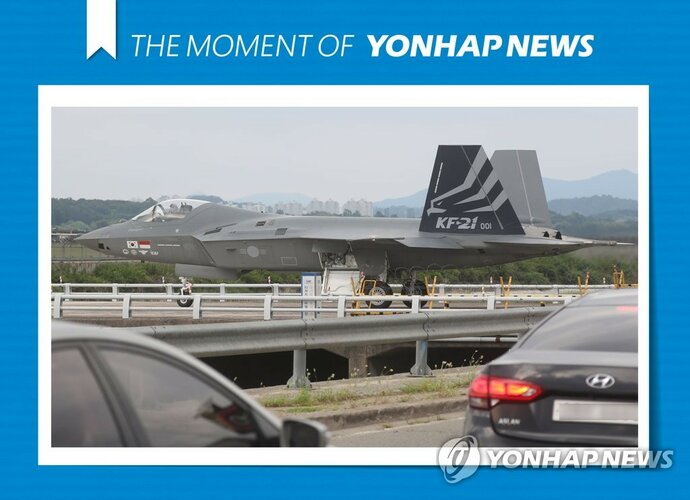the bays certainly look "easy" (maybe this is not the best word) to implement.
The prototype sections clearly shows the weapon bay space, but its being covered with a panel for the semi recessed missiles.
One other concern however, is the paneling on the fueselage..
there's not that many serrated edges if at all (zig zags)
I'd say, a lot of the aspects of KF-21 today could be traced back to/explained as the inertia of the choices made early into the development.
KF-X on its earlier days was meant to be developed as a 5th generation fighter. Preliminary studies were carried out accordingly and resulted in C100 and C200, the F-22 and Northrop NATF lookalikes. Though as the early studies on requirements and self-assessment, as well as Korean aerospace/defense technology matured, they soon realized that they haven't got what it takes to develop a full-fledged 5th gen fighter.
As a result, around early 2010s, ADD, KAI and other parties involved, including the AF all agreed that the most rational choice for the program would be to take a step back and develop a 4.5th gen fighter, which would arguably still be relevant into the '30s and would supplement F-35 well as a main work horse.
It is also around this period when there were serious discussions on if they should make something that really is a 4.5th gen fighter from the ground up or something which is kinda in between the initial and current goals, namely (the single engined, F-16 - and more importantly - T-50 lookalike) C501 and (continuation of the earlier C102/202 designs) C103/203. From what is known, KAI and DAPA seriously pushed for C501 which was supposedly going to be cheaper and easier to design, as opposed to ADD and the AF which argued for a twin-engined design with considerations for future growth and mission capabilities. In the meantime ADD also came up with the idea of growth-in-steps, which was essentially "we will make a 5th gen-to-be fighter with some features lacking and call it a 4.5th gen, but would later turn it into an actual 5th gen fighter". This is the famous "block 3 is 5th gen" plan before 2015.
What's important at this point was that AF made up their mind and was asking for a 4.5th gen fighter. Their ROC reflected on this and was also the reason C501 design was created in the first place, but the problem was that they wanted a twin-engined jet which was more powerful than a single engined C501. So in series of events which could arguably be called a power struggle between KAI/DAPA and ADD/AF (who stood on the same side for different reasons) to decide on who holds the baton(and gets what they want), ADD and AF kinda won.
In the end, ADD's original plans of staged devlopment to 5th gen was scrapped but the design itself, which is based on the studies (C100/200 ~ C103/203) that were meant for a 5th gen fighter development, lived on and became C109, ths final design which the prototypes are based on. Such design wasn't without its benefits, too. Also, although ADD's original plan was thrown into the bin, the concept itself surely had a greater influence of the design which lead to the fuselage compartment that is empty and is meant for the installation of IWB. I'd say, KAI and ADD have bigger ambitions, which is also reflected on their publications and interviews(I mean, if you design something that needs to fly, you don't fit in that big and redundant of a design without a purpose). As for the AF, they're probably fine with any design(apart from anything single engined unless its F135) as long as it meets their 4.5th gen ROC, which is the reason KAI and so on are not interested on implementing serrated panels and other stealth designs for now, as they are not something required by their customers. It's quite straight forward really.
The AF wants 4.5th gen : you give them 4.5th gen design.





